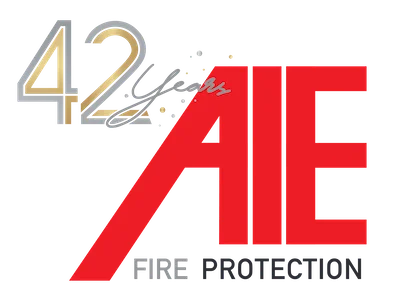As a business owner, the safety of your employees, customers, and clients is your top priority. Fire codes help ensure consistent safety standards across businesses, with fire protection tools like extinguishers and sprinklers playing a vital role. Just as essential is an effective lighting system that guides people safely out of the building and helps firefighters make quick, life-saving decisions to protect lives and your business.
These lighting systems are required in commercial and corporate spaces, providing exit and emergency lighting that activates during power outages to illuminate pathways, exits, and doors. Even if a fire disrupts other utilities, these lights ensure visibility in critical areas. Imagine facing an emergency or fire with no light to guide you—especially in windowless spaces. This lighting can make all the difference, enabling safe self-evacuation rather than leaving individuals to rely solely on emergency responders for rescue.
One of the biggest issues with emergency lighting is that it’s often forgotten in fire safety plans. Inadequate or malfunctioning lighting won’t provide the help you need in an emergency.
Here’s what you need to know about emergency and exit lights, and how you can keep them functioning for your business.
- Ensure all exit and emergency lighting comply with National Fire Protection Association (NFPA) codes.
- Clear the path towards exits so lights are unobstructed and easy to view — nothing should be blocking any escape route.
- Test all exit and emergency lights monthly to confirm they’re operational. Some lights stay on continuously, while others activate only during power outages.
- Check areas of the building that are not frequently inhabited — you never know where someone may be during an emergency and even stairwells that aren’t often used should have adequate lighting.
- Walk all exit paths to ensure adequate lighting and add additional lights where navigation may be challenging during a power failure.
- Protect lighting fixtures that could be at risk of damage, such as from sports equipment or high-traffic areas.
How a Fire Safety Partner Can Help
Beyond guaranteeing that your exit and emergency lighting plan complies with NFPA standards, a fire safety partner can help you stay on top of continued maintenance. They will inspect and test the batteries and bulbs in your lighting system and establish a regular maintenance schedule. They’ll inspect, clean, and repair all components and make sure they remain properly situated for use in an emergency.
Additionally, your fire safety partner will update you on the latest energy-efficient lighting options that can be life-saving in an emergency.
Ready to ensure your lighting system is primed to illuminate your path to safety? Contact AIE today to discuss your fire safety plan and learn how we can help you maintain a safer future.


Recent Comments